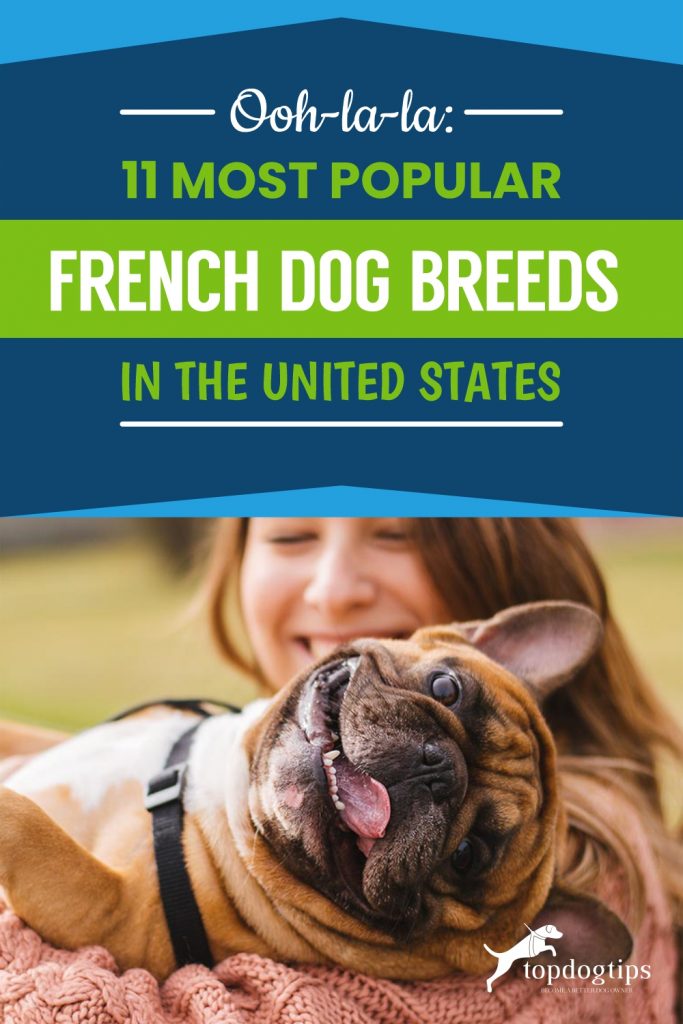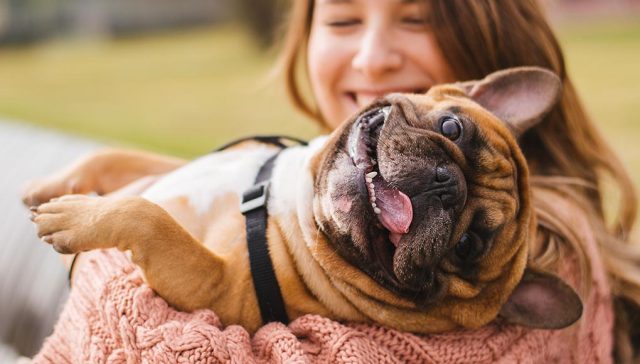
French dogs occupy a space in more and more American hearts. According to the American Kennel Club’s rankings for 2020 (based on its 2019 registrations), three French breeds jumped into the top fifty, and three more reached the top one hundred. An additional five more “honorable mentions” squeezed into the top 200. If you’re considering adding a new family member, any of these eleven breeds will add some joie de vivre to 2021.
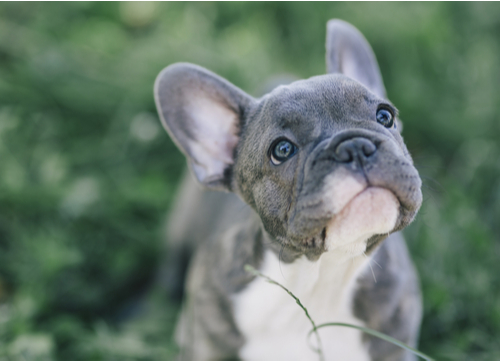
French Bulldog
At number 4, this compact dog leapt from 76th place to its current rank in just two decades. Originally miniature bulldogs brought from England were bred with terriers to reduce the size of the breed. The result was a small companion dog, who also endeared itself to owners by keeping their homes free of rats and vermin.
Today, apartment dwellers love this breed because of its size and adaptability. A small dog at less than 28 pounds, it stands at 11 to 13 inches high. The French bulldog has distinctive bat ears, short legs, and a squat, muscular body. The head is big and square, with wrinkles above an extremely short nose. Its smooth, short coat is white, yellowish tan, or brindle (striped), or a combination of those colors.
With their relatively low energy level, these dogs don’t require a lot of exercise outside. French bulldogs are alert watchdogs but don’t bark much. Affectionate, they are also friendly to other people and animals. Another plus is the bulldog’s short coat, which is easily maintained. However, their flat faces and short noses make them susceptible to respiratory issues and overheating.
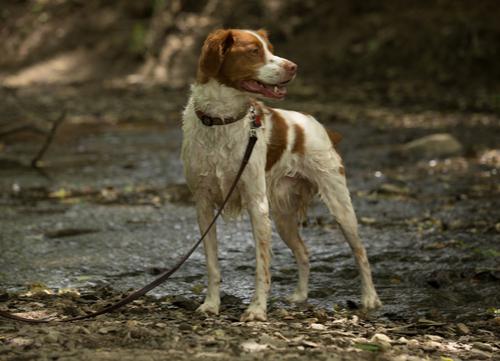
Brittany
Named after a region in northwest France, this energetic hunting dog scrambled to 26th in the rankings. Bred in the 17th century for pointing and retrieving, the Brittany stands about 20 inches high, with longer legs than spaniels. A medium-sized dog, it weighs between 30 and 40 pounds. Their dense coat is a two-tone combination of white and orange or reddish-brown.
Smart, affectionate, and playful dogs, they do well in active families with children. They excel at agility sports and are highly trainable. On the other hand, they need daily exercise or enrichment, with at least a fenced-in yard that gives them room to run. If they are left alone for too long, their restlessness and boredom can lead to barking and destructive behavior. They will be happiest with an engaged owner who has time to give them the socialization, exercise, and ongoing training these dogs need. Since the Brittany forms strong bonds with its people, this dog can be prone to separation anxiety. As instinctive hunters, they also tend to wander, so good recall training is essential if they are going off-leash.
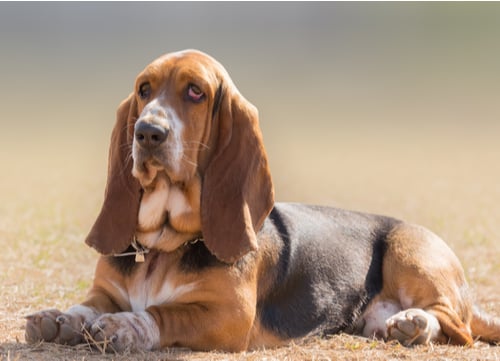
Basset Hound
The distinctive basset hound, with those long ears and soulful eyes, snuffled his way to 37th place. The name “basset” likely came from the French word “bas,” an adjective that means “low,” because the dog was originally bred to be a low-to-the-ground scent hound. Standing only 14 to 15 inches high, the basset hound weighs around 40 to 65 pounds. The dog’s coat is short and colored in two-tone combinations of white and black, brown, reddish-brown, lemon (blond), or tan.
Today, dog lovers admire the basset’s patience, loyalty, and mellow personality. The basset hound’s ability to follow a scent is extraordinary; only the bloodhound’s nose is better. Like the French bulldog, they don’t require a lot of exercise.
However, they can be stubborn, especially when following a scent. Since they really enjoy their food, owners must provide a proper diet (in appropriate portions) and enough exercise to keep them at a healthy weight. Those long, velvety ears also make them prone to ear infections.
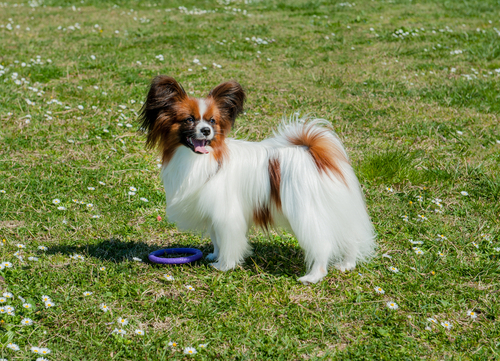
Papillon
Placing number 53 in the rankings, this tiny dog was bred in the 1500s to be a royal companion. Popular with the upper classes, papillons appear with their wealthy owners in portraits painted by artists such as Fragonard and Titian. The name “papillon” comes from the French word for “butterfly,” since the dog’s ears resemble a butterfly’s wings.
A small-boned, delicate-looking dog, the papillon stands 8 to 11 inches high and weighs between 5 and 10 pounds. The coat is long and silky, with a white base. The mask and markings can be red, black, sable, or lemon.
Papillons are alert, cheerful, and affectionate dogs. They love to be on their people’s laps and do well with children and other dogs. Their high energy level makes them playful and athletic. While they appear dainty and elegant, they are actually robust and hardy. They excel at agility sports and can be taught to perform a variety of tricks.
However, they can be stubborn and vocal if their needs aren’t met. Because of their energy level, they require daily walks and lots of playtime. The long, silky coat must be brushed regularly and the ears checked often to guard against infection.
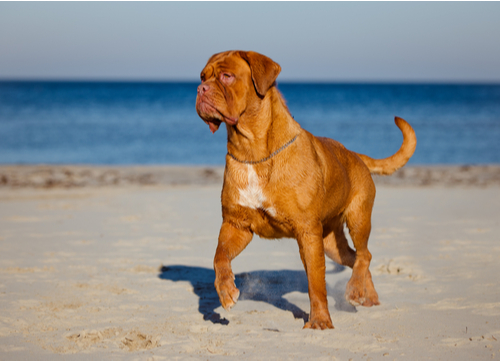
Dogues de Bordeaux
The name means “Mastiff of Bordeaux,” and this dog is sometimes called a French Mastiff. The Romans introduced this ancient breed to France during their occupation. These mastiffs were bred to fight in wars and in competitions with gladiators.
Stomping to number 68 in the rankings, this large, muscular dog stands 23 to 27 inches high and weighs between 100 to 110 pounds. It has a squarish head like a bulldog and lots of wrinkles. The short coat comes in shades of fawn, from light to dark red.
These dogs are loyal to their people, protective and affectionate. On the other hand, they don’t get along with other dogs. They can also be stubborn, needing firm and ongoing training.
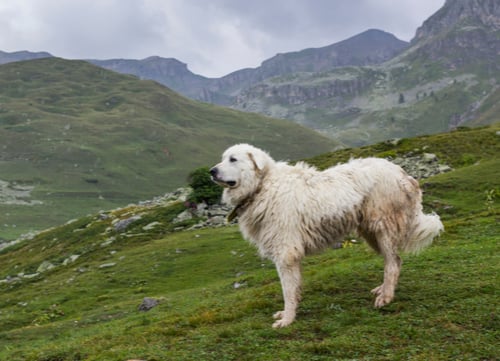
Great Pyrenees
Placing at number 69, this massive dog’s name derived from the mountains that serve as a natural border between France and Spain. The breed worked side by side with shepherds and herding dogs in those mountains to protect livestock from predators. In the seventeenth century, King Louis XIV designated the Great Pyrenees breed as the Royal Dog of France. Today, shepherds still use these dogs to keep their livestock safe.
The dog stands 25 to 32 inches high. Females weigh 85 to 110 pounds, while the larger male weighs between 100 to 150 pounds. Their thick double coat, weatherproof in all seasons, is white, sometimes marked with shades of gray, tan, or reddish brown.
This smart, calm dog makes a wonderful family pet with its affectionate and patient demeanor. Great Pyrenees are gentle with both children and dogs and need only moderate exercise. However, this dog’s thick coat does shed a lot. Bred to be guardians, these dogs also bark often to alert their people.
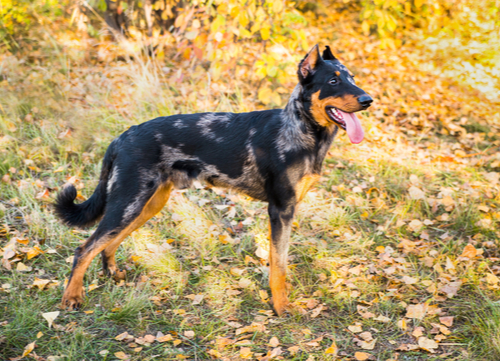
Beauceron
Coming in at number 121 in the AKC rankings, the Beauceron is named after La Beauce, an agricultural region southwest of Paris. The breed goes back to at least the sixteenth century, when these dogs worked as livestock herders. Beaucerons have also served during both World Wars. Today, they are still used by the military and police and also work to herd livestock. Agile and athletic, they excel at dog sports.
This large dog stands 24 to 27.5 inches high and weighs 70 to 110 pounds. Its short, dense double coat comes in two-tone combinations of black and tan, black and rust, grey-black and tan, and harlequin (white with scattered black patches).
Beaucerons are calm and loyal, making good family pets. However, they shed a lot, and their dense coat requires weekly brushing. These dogs need a job, or at least a lot of exercise and enrichment activities. If Beaucerons get bored, they can engage in destructive behavior. Also, although eager to please, they can be difficult to train.
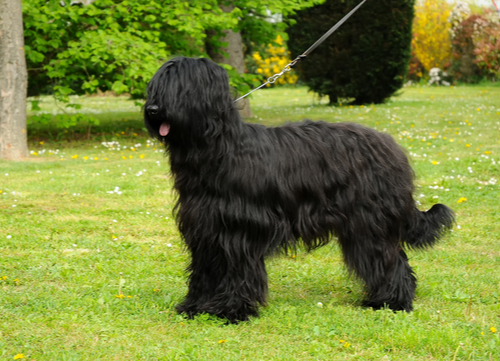
Briard
This dog, ranked 135th, resembles a big black mop on legs. The breed received its name from the dairy-producing region of Brie in the north of France. Briards are an old breed, possibly going back as far as the eighth century. These dogs worked as herders and guardians of livestock. They have also been used during the World Wars.
The male stands 23 to 27 inches high, with the female a bit shorter. Briards can weigh anywhere between 55 to 100 pounds. They have a double coat, with a fine undercoat. Their coarse topcoat can be flat or wavy. The Briard’s coat is black, gray, or tawny.
This dog is a good companion for active people and excels at canine jobs and sports. The Briard is gentle, loving, and intelligent, dedicated to protecting the family, particularly children. While the breed is also eager to please, training has to be interesting to keep the Briard engaged.
While they are wonderful with their family’s children, Briards may not get along with other dogs. They also require a lot of exercise and a large, fenced-in area where they can run free. Their double coats require daily brushing.
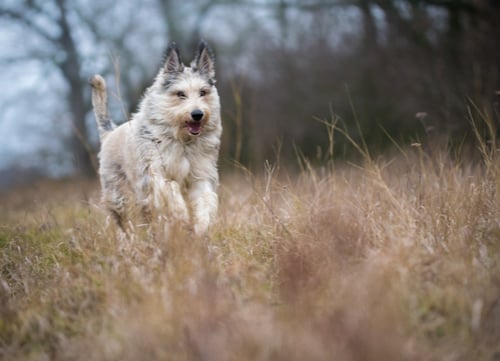
Berger Picard
Coming in at number 146, this herding sheepdog was named for the Picardy region in northern France. This old breed stands between 21.5 to 25.5 inches high and weighs 50 to 70 pounds. The dog has distinctive, large pointy ears. Its double coat is rough and shaggy on the top layer and soft, short, and dense underneath. The coat comes in tan or brindle colors.
Ideal for active owners, these dogs are loyal, intelligent, and adventurous. They excel at any dog sport or job. On the other hand, they can also be stubborn and wary of strangers. Their independence makes them a challenge to train, and early socialization is a must. They also need a lot of exercise because boredom will drive them to destructive behaviour.
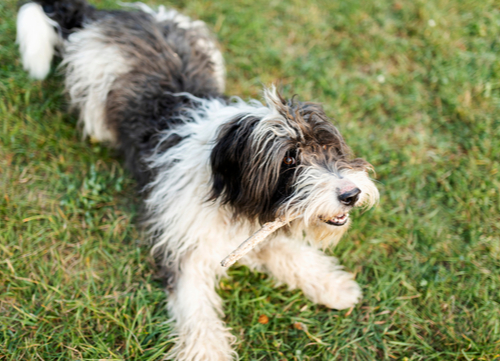
Petit Basset Griffon Vendéen
Ranked at 152, this breed’s name reveals so much about the dog. The French word “petit” means small, while “basset” means low. The word “griffon” means rough-coated, and “Vendéen” is a region in the west of France. So, this small hunting dog with its short legs and rough coat hunted rabbits along the rocky coast in Vendéen.
Although this small dog stands only 13 to 15 inches tall and weighs between 25 and 40 pounds, it is all hound with its loud, resonant bark. The rough double coat comes in black and tan, or white with a variety of other colors, including black, gray, orange, and lemon.
This alert, happy dog gets on well with other dogs and children. Its coat needs a thorough brushing at least once a week. This breed requires a lot of exercise and plenty of room to explore. Since they are scent hounds, these dogs will wander off when following a trail and so should stay on leash outside unless they’re in a fenced yard.
The Grand Basset Griffon Vendéen, which is the larger version of this hunting dog, also receives an honorable mention, having slipped onto this list at 178th place.
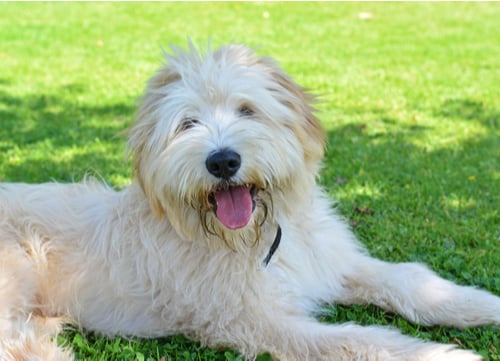
Pyrenean Shepherds
The last French breed, ranked at 182, is a cuddly charmer at 182. This herding dog from the Pyrenees Mountains still works with shepherds today, often alongside Great Pyrenees.
Around 15 to 18 inches high, these small dogs weigh 15 to 30 pounds. Their coats come in two varieties: rough-faced and smooth-faced. As implied, rough-faced dogs have a lot of hair above the muzzle and a rough coat. Smooth-faced dogs have less facial hair, a smoother coat, and a longer, more pointed muzzle. Coat colors include shades of fawn, gray, and black with some white markings.
These dogs are affectionate and enthusiastic. They make good candidates for games and canine sports because of their intelligence, agility, and energy. That energy, though, requires an owner to commit to a lot of daily exercise and activity. Their double coat sheds quite a bit and needs weekly brushing.
Go French!
This year’s American Kennel Club rankings confirm that French breeds are rising in popularity, slowly gaining ground in the United States. These breeds have captured the affections of many dog lovers along the way. If going French sounds appealing, then one of these special breeds can find a place in your heart. Whether bred originally as a lap dog, herder, or a hunter, one of these French dogs can become the perfect canine companion for you.
Read Next: 4 Most Popular Italian Dog Breeds
